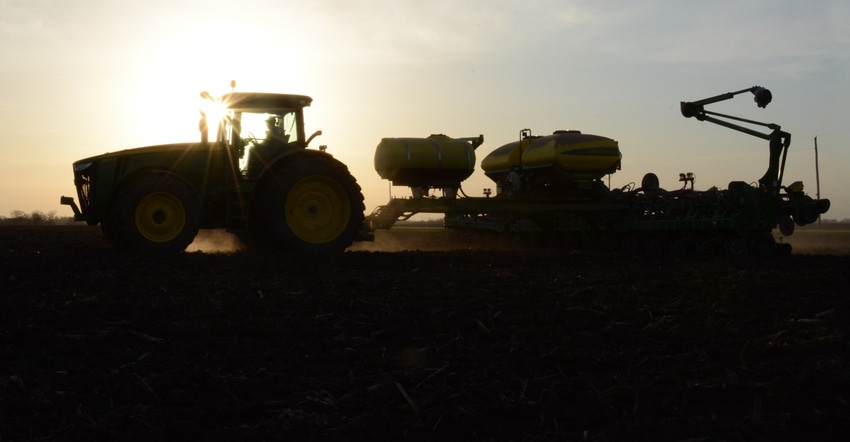
What makes a good corn hybrid — or a bad one? Big test plot numbers? Your neighbor’s experience? Long-term performance? Company data?
Or maybe, as John McGillicuddy argues, the hybrid that’s perceived as “good” is the one that got planted in the right place at the right population. And the “bad” hybrid is the one that got planted in the wrong place, with the wrong population.
In the end, it’s a perception issue, but one based on very real yield — and a potential timeline problem. McGillicuddy, agronomist and partner at McGillicuddy-Corrigan Agronomics, doesn’t believe many bad hybrids actually make it through the grueling test of becoming a commercial hybrid. But it takes time to figure out how to use new hybrids, and as companies churn out new hybrids faster than ever, farmers and agronomists have less time to figure out what works.
“A lot of hybrids come and go in three to five years, and in many cases, it’s the second or third year before we really start to understand how to use it correctly,” McGillicuddy explains. “The art of figuring out where to place and manage them takes time.”
Turnover and time
Earlier in his career, McGillicuddy worked as a developmental agronomist for two different seed companies. He and his teams tested hybrids in the Southwest, effectively the last gate before a hybrid went commercial. Their question then was the same as today: Do you take a hybrid that you have, say, four years of experience with — you know how to place, populate and manage it — and replace it with a hybrid that yields 2% better in research field trials?
“Our argument was always that we’re going to lose a lot more than 2%, because we don’t understand this thing yet,” he recalls.
Today, hybrids cycle even faster. Plant breeders can insert genetic traits into a cell and grow an entire plant from that cell, which is essentially a genetically pure inbred. They don’t have to go through eight or nine generations of self-pollination to clean it up. And they can produce seed in Hawaii at a rate of three cycles per year.
It’s a fiercely competitive business. Still, McGillicuddy says there’s no replacement for real-world experience, compared to company data that may have come from mostly ideal soil and weather conditions.
He argues the industry gives up a proven, understood hybrid too quickly. “It could take us two to three years of experience with the new one to even get back to the yields that we could achieve with the older.”
Making decisions
So how do you decide what to plant? McGillicuddy gives two steps:
1. Trust personal performance. Keep the majority of your acres in hybrids you’re familiar with, that have performed on your farm and that you understand.
2. Go slow with anything you haven’t used. Evaluate new hybrids on limited acres, but continually evaluate new hybrids.
“You should be evaluating a potential replacement for every one of those hybrids you’re already comfortable with,” he recommends. “If you’ve got five or six hybrids in your lineup that you really like, you should be evaluating a minimum of five to six potential replacements.”
In an 80-acre field, plant 10 to 14 acres with a new hybrid, so it runs head to head with a veteran hybrid. Think like a coach, and don’t bet too much of your operation on an untested rookie.
“How many No. 1 NFL draft picks amount to nothing two years later?” McGillicuddy asks, laughing. “They were really good in college. But when they start playing against people who’ve been making their living at this for three or four years, it gets tougher.”
McGillicuddy calls that the “rookie camp” philosophy: If a hybrid has never been on your farm, it doesn’t need to be on a whole lot of acres the first year you plant it. He says you’ll learn a lot about a hybrid when it goes commercial on 100,000 acres across the Midwest that you didn’t see in test plots.
Consider the opportunity cost of changing hybrids, too. If you’re putting in a new hybrid, what are you taking out?
�“If you make it to the Super Bowl, you don’t bench all your veterans and put 11 rookies on the field,” he says. Look at that new hybrid like a rookie that got invited to training camp, and you need to see how it performs on your team and whether it can compete with the hybrid that’s already there. And keep evaluating new hybrids, because you never know when you’re going to lose a veteran.
McGillicuddy and his partner, Karen Corrigan, work with more than 200 farmers across nine states, so they use internal data to help farmers make better hybrid decisions. They track hybrid performance across varying plant populations, often going up by 3,000 seeds and down by 3,000 seeds, trying to find what works with that hybrid.
“What kind of environment does it like? Narrow rows or wide?” he asks. “Some hybrids react negatively to a crowd more than others. Those are all things you have to learn about.”
The answers to those questions may just help determine whether a hybrid is a good fit — or a bad fit — for your farm.
About the Author(s)
You May Also Like






